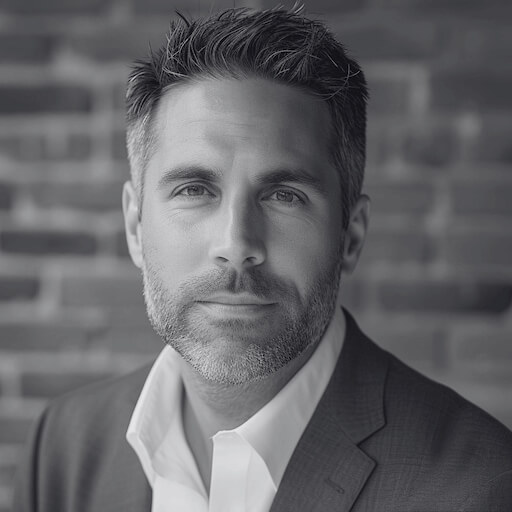Washington Bullying Statistics 2023: Facts about Bullying in Washington reflect the current socio-economic condition of the state.

LLCBuddy editorial team did hours of research, collected all important statistics on Washington Bullying, and shared those on this page. Our editorial team proofread these to make the data as accurate as possible. We believe you don’t need to check any other resources on the web for the same. You should get everything here only 🙂
Are you planning to start a Washington LLC business in 2023? Maybe for educational purposes, business research, or personal curiosity, whatever it is – it’s always a good idea to gather more information.
How much of an impact will Washington Bullying Statistics have on your day-to-day? or the day-to-day of your LLC Business? How much does it matter directly or indirectly? You should get answers to all your questions here.
Please read the page carefully and don’t miss any words.
On this page, you’ll learn about the following:
Top Washington Bullying Statistics 2023
☰ Use “CTRL+F” to quickly find statistics. There are total 31 Washington Bullying Statistics on this page 🙂Washington Bullying “Latest” Statistics
- According to the National Center for Educational Statistics (2019), 41% of students who reported being bullied at school indicated that they think the bullying would happen again.[1]
- When bullying was prevalent in schools at a rate of around 28% in 2005, the federal government started collecting statistics on it.[1]
- The proportion of public schools reporting cyberbullying at least once a week quadrupled from 8 to 16% in 2019–2020.[2]
- A meta-analysis of 80 research that looked at the prevalence of bullying among 12–18year old adolescents found that conventional bullying engagement was on average 35%, whereas cyberbullying involvement was 15%. (Modecki, Minchin, Harbaugh, Guerra, & Runions, 2014)[1]
- Students who reported conventional bullying (PR = 2.2; 95% CI: 1.7-2.4), cyberbullying (PR = 2.8; 95% CI: 1.6-4.9), and both (PR = 5.9; 95% CI: 4.6-7.7) were more likely to also report gun access.[3]
- The National Center for Education Statistics, the research arm of the U.S Department of Education, reported that during the 2016–2017 academic year, 20% of students between the ages of 12 and 18 experienced bullying.[4]
- School-based bullying prevention programs decrease bullying by up to 25%. (McCallion & Feder, 2013).[1]
- 15.7% of U.S high school students experienced cyberbullying between 2018 and 2019.[5]
- 72% of bullied private school students and 55% of bullied public school students believe their bullies can influence what other students thought about them. (BJS)[5]
- 46% of victims of bullying said they told a school official about the occurrence.[1]
Washington Bullying “Bully” Statistics
- According to a study by researchers from the University of Washington and Indiana University, 34% of the kids in the study participated in bullying, and 73% said they had been bullied in some way in the preceding year.[6]
- National Center for Education Statistics and Bureau of Justice statistics indicates that nationwide, 28% of students in grades 6-12 experienced bullying.[7]
- Girls reported higher rates than boys for bullying others, accounting for 61% of the reported incidents.[6]
- 15% of students who experienced bullying reported being bullied through text or the internet, a 3.5 percentage point increase over the 2014–2015 academic year.[4]
- Recent data from the Cyberbullying Research Center show that, in 2021, 23% of 13- to 17-year-old students reported experiencing bullying and 7% reported bullying others.[8]
- According to statistics provided by WCPS, there were a total of 240 reports of suspected bullying across all grade levels during the 2016-17 school year.[9]
Washington Bullying “Other” Statistics
- Over a five-year period, 51% of families in the Seattle research reported experiencing intimate partner violence at one or both of two specific periods.[6]
- In the fall semester, according to Inside Higher Ed (2020), 46% of students report feeling worried about going back to a campus.[5]
- According to Globe NewsWire, 45% of high school students report feeling stressed all the time.[5]
- According to a journal, Bullying and Quality of Life in Youths Perceived as Gay, Lesbian, or Bisexual in Washington State (2010), among male students, 14%, 11%, and 9% reported being bullied because of PSO in 8th, 10th, and 12th grades, respectively; and among female students, 11%, 10%, and 6%.[10]
- According to the National Center for Educational Statistics (2019), bullied students indicate that bullying has a negative effect on how they feel about themselves (27%), their relationships with friends and family (19%), their school work (19%), and physical health (14%).[1]
- As data’s gathered by Patchin and Hinduja (2020), only 1% of tweens aged 9 to 12 reported being bullied exclusively online, compared to 13% of those who said they had been tormented both at school and online.[1]
- 58% of college students say they were “moderately,” “very” or “extremely” concerned about their mental health. (Inside Higher Ed, 2020).[5]
- 15% of kids between the ages of 12 and 18 who reported being bullied at school in 2019 were tormented online or by text.[1]
- According to Statista (2020), 48.3% of American college students who sought treatment suffered from anxiety depression or stress.[5]
- 7% of males and 21% of girls who reported being bullied were targeted through text or online.[4]
- Anxiety, sadness, and stress are cited by 54.2% of mental health professionals as being the main problems of their patients who are college students.[5]
- 68% of students in four-year US colleges live away from their homes, which is a source of trauma and stress. (WhatToBecome, 2021).[5]
- Around 40% of women admitting they have experienced domestic violence at least once in their lives.[6]
- According to the CDC’s 2019 Youth Risk Behavior Surveillance System, 19% of students in grades 9-12 said they were bullied on school property in the previous 12 months.[6]
- In the U.S, 61% of college students got information on stress management from their institution.[5]
Also Read
- Alabama Bullying Statistics
- Alaska Bullying Statistics
- Arizona Bullying Statistics
- Arkansas Bullying Statistics
- California Bullying Statistics
- Colorado Bullying Statistics
- Connecticut Bullying Statistics
- Florida Bullying Statistics
- Georgia Bullying Statistics
- Hawaii Bullying Statistics
- Idaho Bullying Statistics
- Illinois Bullying Statistics
- Indiana Bullying Statistics
- Kansas Bullying Statistics
- Louisiana Bullying Statistics
- Maine Bullying Statistics
- Massachusetts Bullying Statistics
- Michigan Bullying Statistics
- Minnesota Bullying Statistics
- Mississippi Bullying Statistics
- Missouri Bullying Statistics
- Montana Bullying Statistics
- Nebraska Bullying Statistics
- Nevada Bullying Statistics
- New Hampshire Bullying Statistics
- New Jersey Bullying Statistics
- New York Bullying Statistics
- North Carolina Bullying Statistics
- North Dakota Bullying Statistics
- Oklahoma Bullying Statistics
- Oregon Bullying Statistics
- Pennsylvania Bullying Statistics
- Rhode Island Bullying Statistics
- South Carolina Bullying Statistics
- South Dakota Bullying Statistics
- Tennessee Bullying Statistics
- Texas Bullying Statistics
- Utah Bullying Statistics
- Virginia Bullying Statistics
- Washington Bullying Statistics
- West Virginia Bullying Statistics
- District of Columbia Bullying Statistics
How Useful is Washington Bullying
At its core, bullying is about power and control. It involves leveraging one’s power dynamics to intimidate or harm others, whether physically, emotionally, or psychologically. When these tactics are used by policymakers in Washington, they run counter to the values of integrity, fairness, and respect that should be the foundation of any functioning government.
One of the dangers of Washington bullying is the impact it can have on decision-making processes. When individuals in positions of power resort to intimidation to get their way, it can distort the policymaking process and undermine the pursuit of the common good. Instead of engaging in constructive dialogue, bullying can create an environment of fear and mistrust, where dissenting voices are silenced and critical thinking is stifled.
Furthermore, the use of bullying in Washington can also have a chilling effect on public discourse. When officials in high positions engage in bullying behavior, it sets a dangerous precedent for how individuals interact with one another in society. It can send a message that it is acceptable to insult, demean, or belittle others in order to advance one’s own agenda, leading to a toxic political culture where divisiveness reigns supreme.
Moreover, Washington bullying can have implications for national security and international relations. When leaders resort to intimidation tactics in dealing with foreign governments or international organizations, it can escalate tensions, breed mistrust, and jeopardize diplomatic efforts. In a world where collaboration and cooperation are paramount, the use of bullying as a diplomatic tool can have grave consequences for peace and stability.
It is crucial for policymakers in Washington to reject bullying in all its forms and instead prioritize dialogue, respect, and collaboration. By fostering an environment of open communication and mutual respect, policymakers can work towards finding common ground, building consensus, and ultimately serving the best interests of the public.
In conclusion, Washington bullying is a harmful and counterproductive practice that has no place in government. By refraining from bullying tactics and instead promoting a culture of respect and collaboration, policymakers can uphold the principles of democracy, promote effective governance, and work towards a more just and inclusive society. The stakes are too high to allow bullying to continue unchecked in Washington, and it is imperative that we collectively reject this behavior in favor of a more ethical and constructive approach to governance.
Reference
- pacer – https://www.pacer.org/bullying/info/stats.asp
- washingtonpost – https://www.washingtonpost.com/education/2022/06/28/school-shootings-crime-report/
- nih – https://pubmed.ncbi.nlm.nih.gov/28652055/
- washingtonpost – https://www.washingtonpost.com/local/education/more-students-are-being-bullied-online-federal-report-says/2019/07/15/0f19f7d0-a71d-11e9-9214-246e594de5d5_story.html
- financesonline – https://financesonline.com/student-stress-statistics/
- washington – https://www.washington.edu/news/2006/09/12/violence-in-the-home-leads-to-higher-rates-of-childhood-bullying/
- wcsdschools – https://www.wcsdschools.com/bullying-harassment
- childtrends – https://www.childtrends.org/blog/school-bullying-has-decreased-during-the-covid-19-pandemic-but-schools-must-be-prepared-for-its-return
- heraldmailmedia – https://www.heraldmailmedia.com/story/news/local/2018/03/24/parents-voice-concerns-about-bullying-in-washington-county-public-schools/44479359/
- nih – https://www.ncbi.nlm.nih.gov/pmc/articles/PMC3682606/
